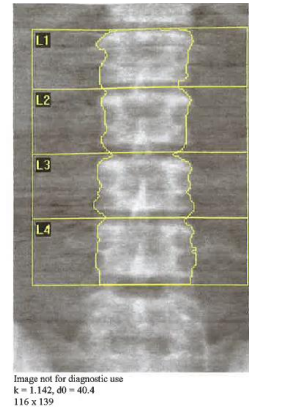
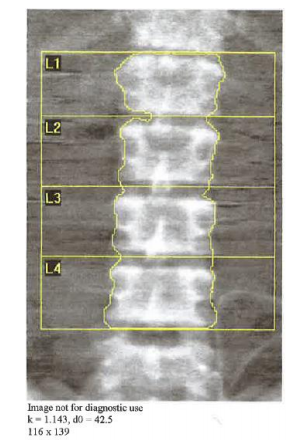
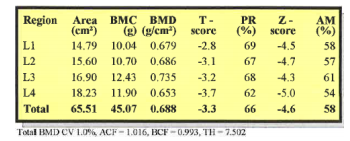
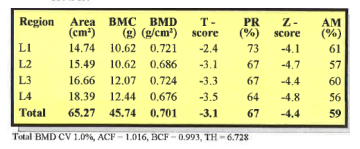
Legend: The left panel shows a spine DXA with indwelling dialysate and the right hand panel shows a spine DXA after the dialysate was drained. Notice that
BMD increases after the dialysate is drained. The TH, or thickness value also decreases after the dialysate is 35 drained. While the difference in BMD is within the 95% LSC at this institution, a clinical trial showed that BMD
increased significantly with indwelling peritoneal dialysate was drained [10] .
Ascites and peritoneal dialysate will not usually produce a visual artifact on a DXA scan. It is important that a DXA technologist view the patient and ask questions about the presence of ascites and peritoneal dialysate. The presence of indwelling peritoneal dialysate has been found to significantly lower spine BMD and it is recommended that patients should be scanned without indwelling dialysate [10] . The presence of ascites generally decreases BMD at the lumbar spine [11, 12]. The precision of a bone density measurement would be affected if a patient is scanned at one time with dialysate or ascites and the next time without dialysate or the presence of ascites.
Hologic Images courtesy of Sarah L Morgan MD, RD, CCD
References
10. Mann, M.L., et al., The effect of peritoneal dialysate on DXA bone densitometry results in patients with endstage renal disease. J Clin Densitom, 2008. 11(4): p. 532-6.
11. Guanabens, N., et al., Patients with cirrhosis and ascites have false values of bone density: implications for the diagnosis of osteoporosis. Osteoporos Int, 2012. 23(4): p. 1481-7.
12. Labio, E.D., et al., Effect of ascites on bone density measurement in cirrhosis. J Clin Densitom, 2007. 10(4): p. 391-4.

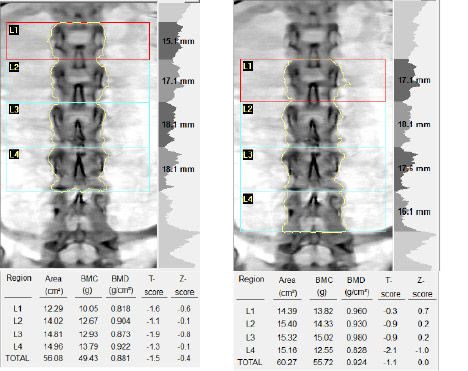
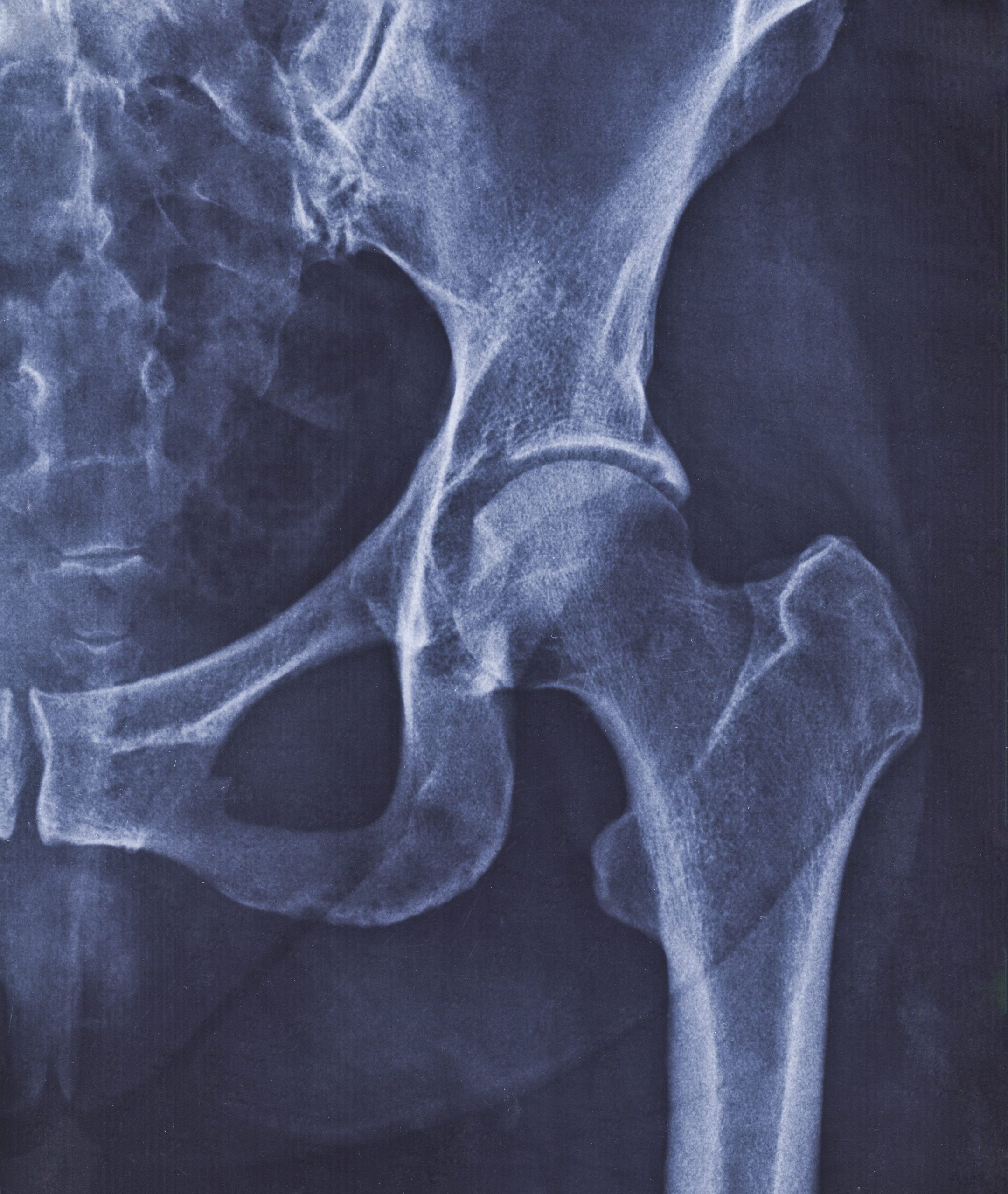
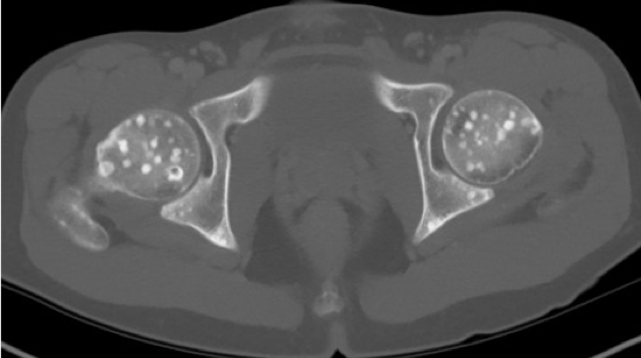
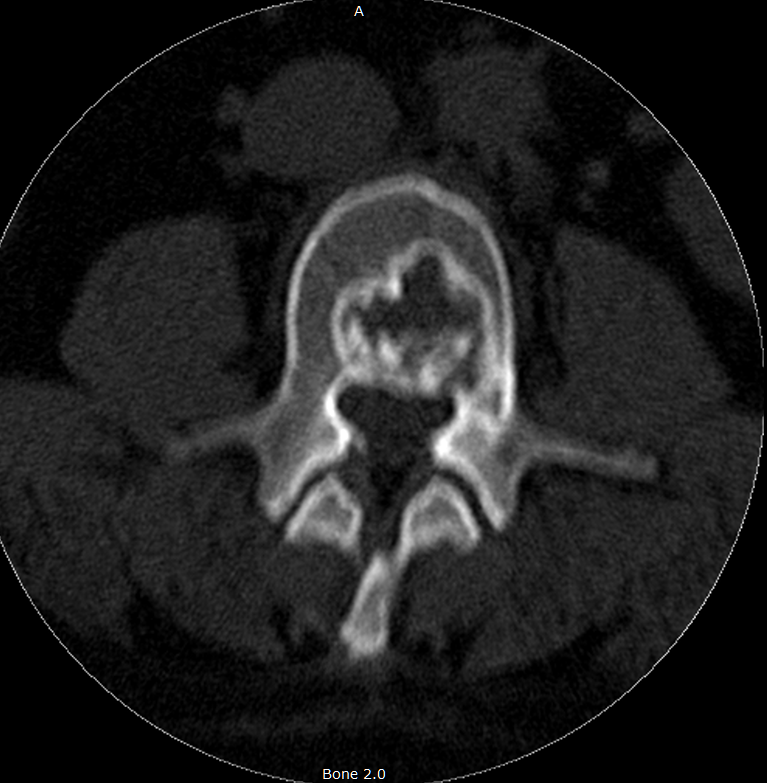
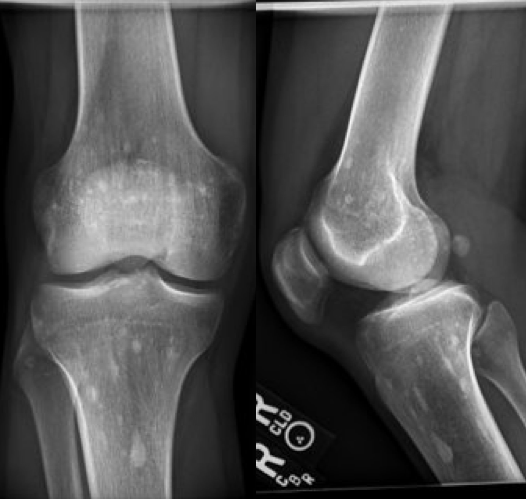
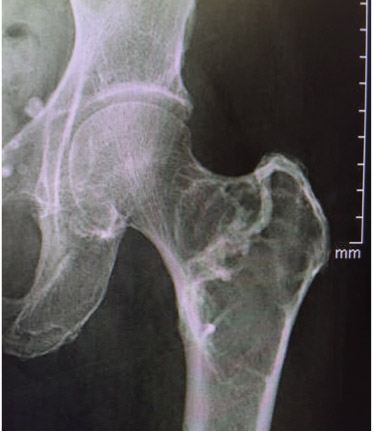


Hello
Hello Jesse